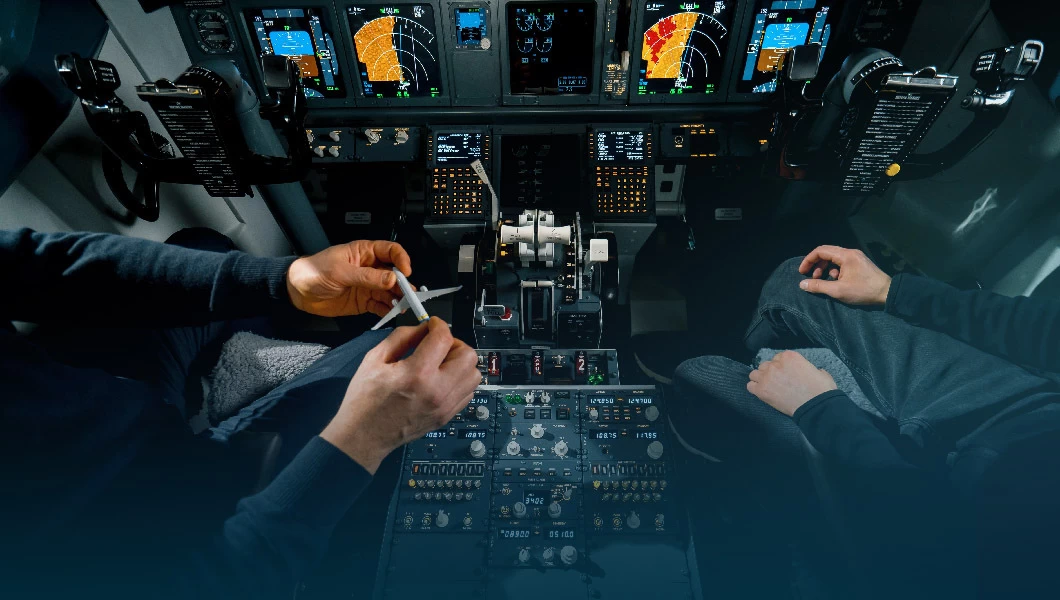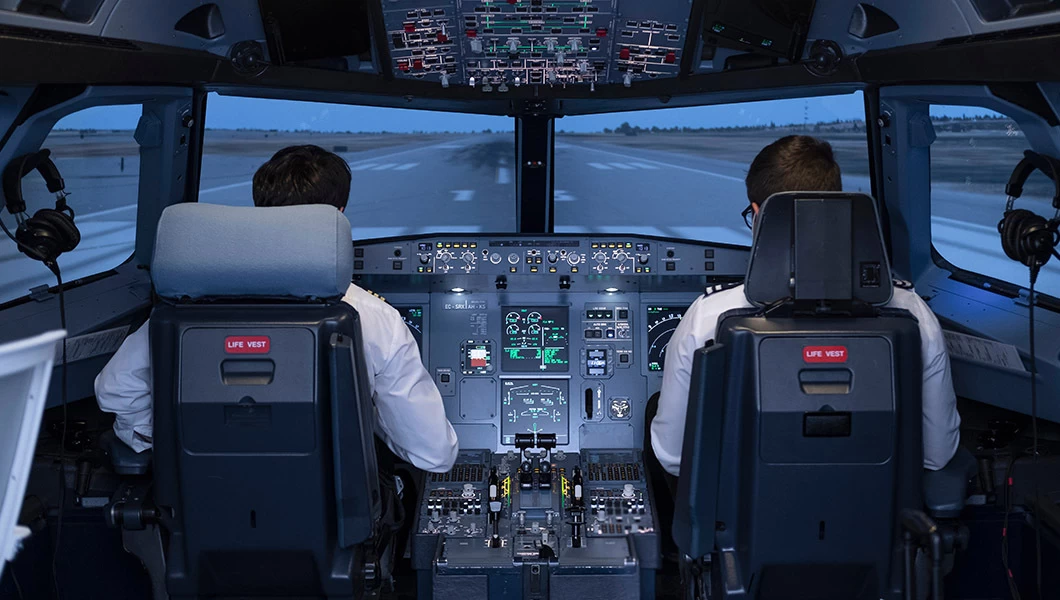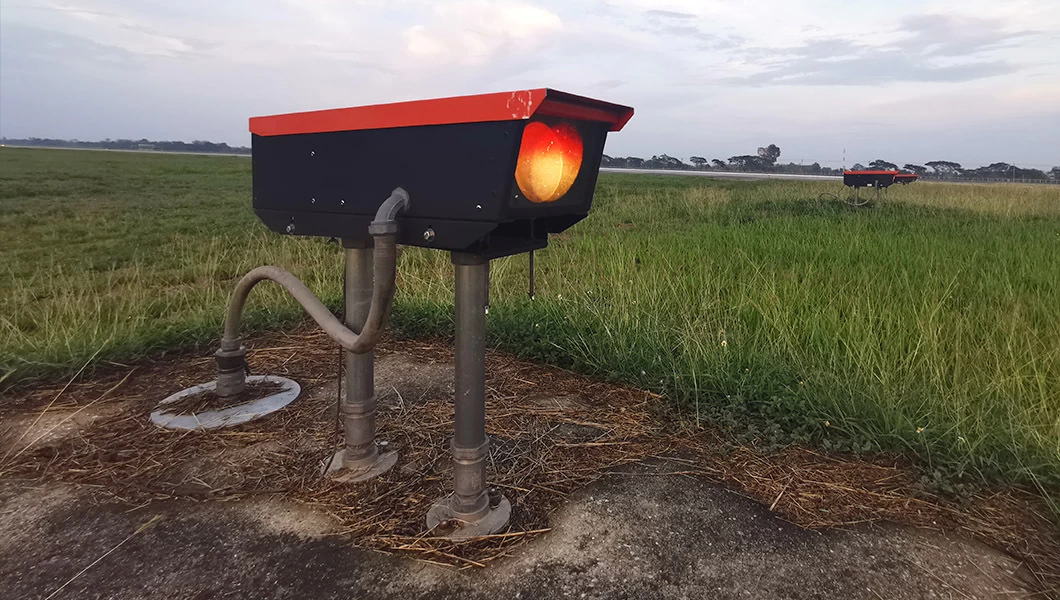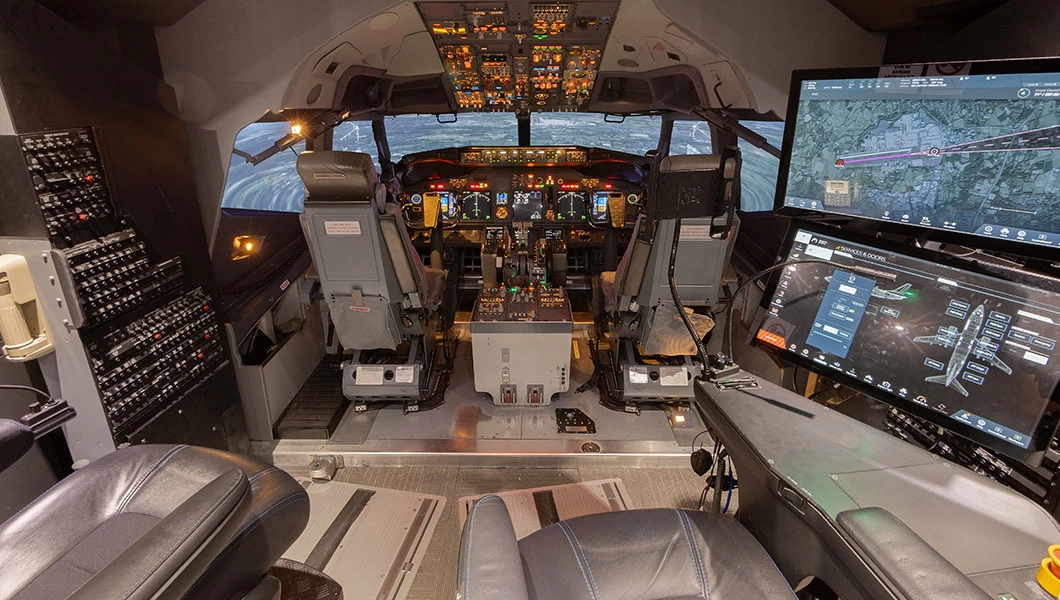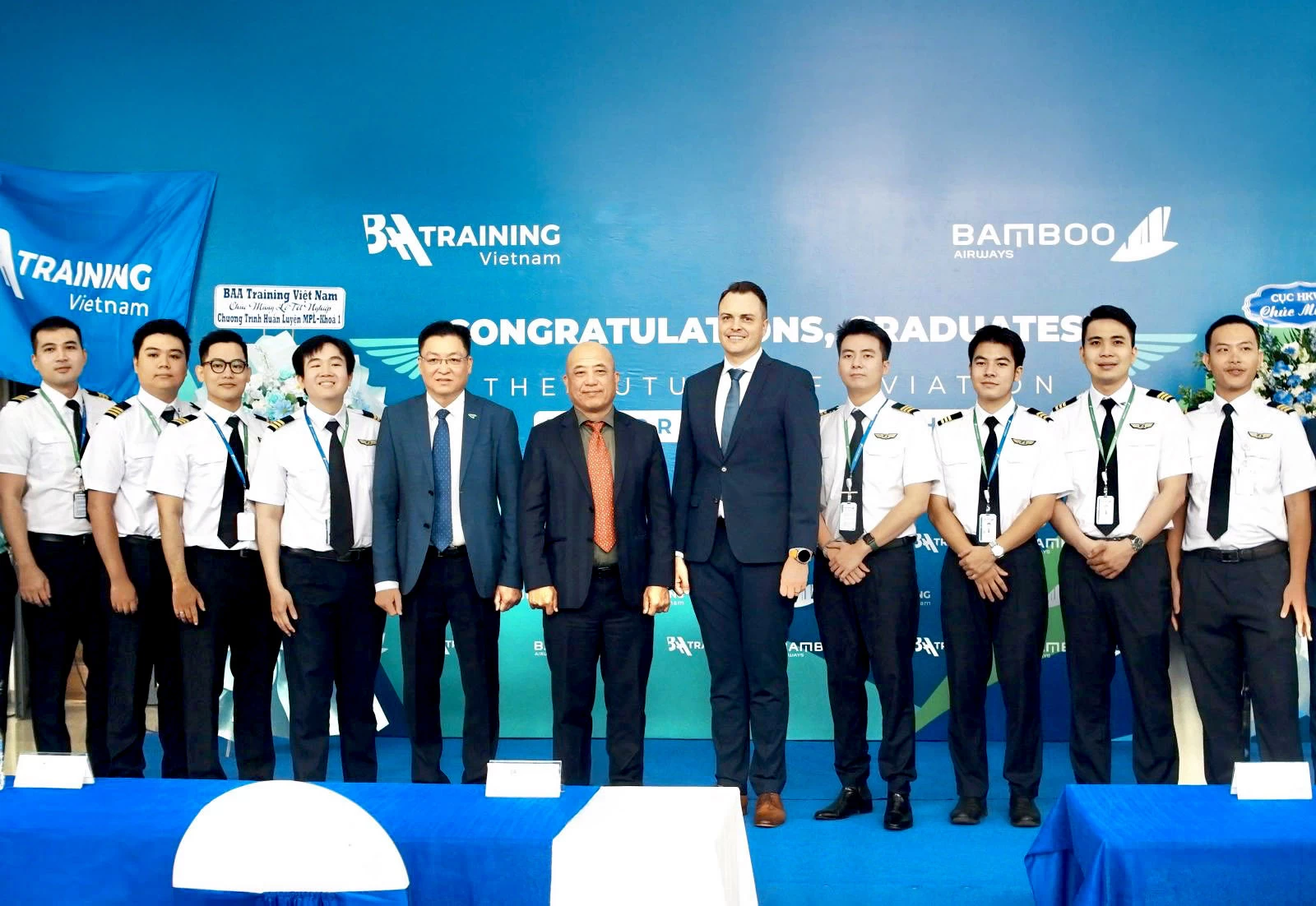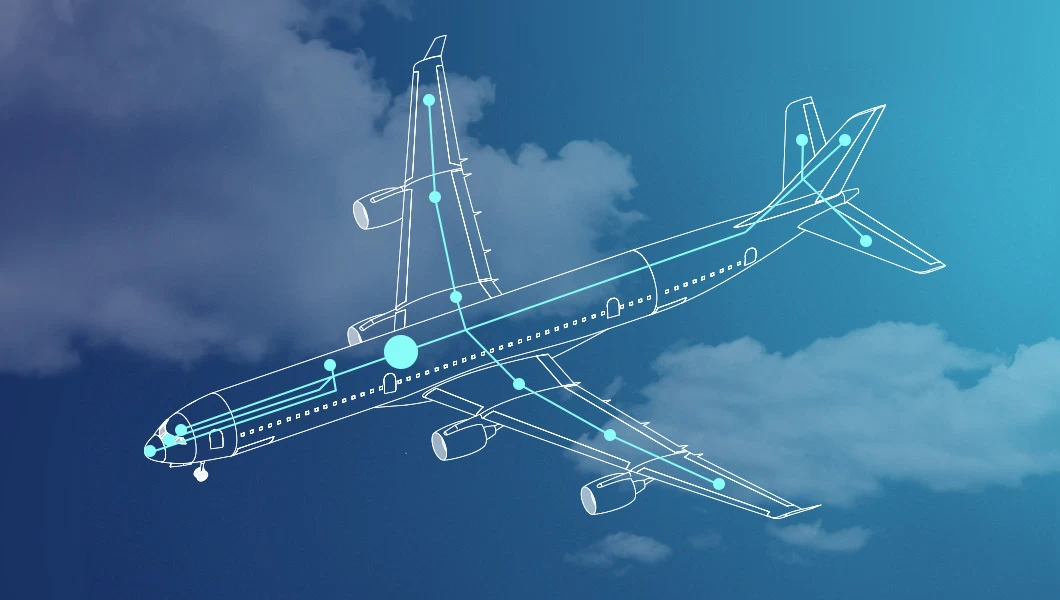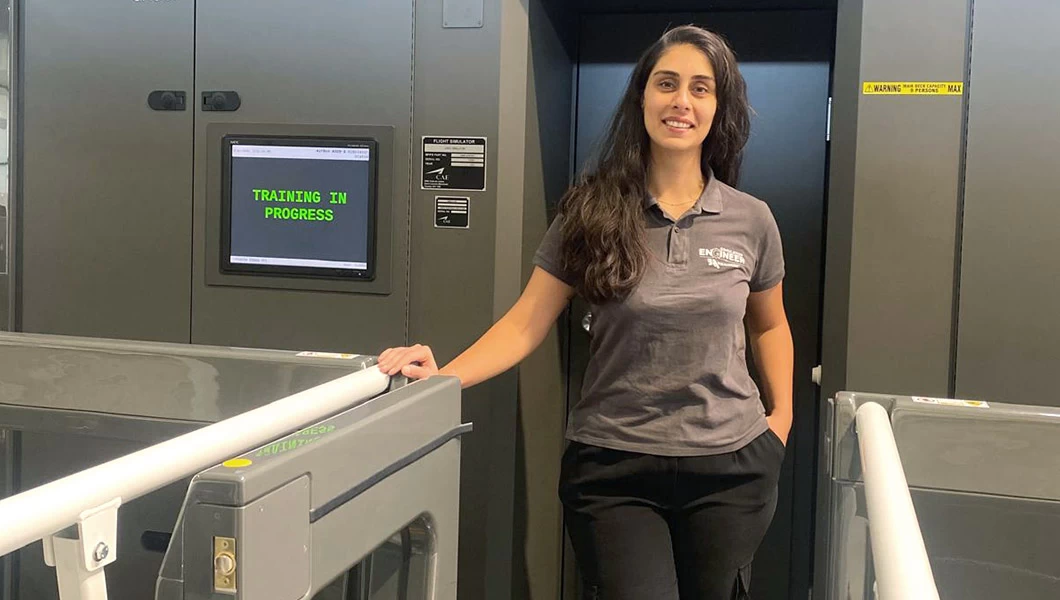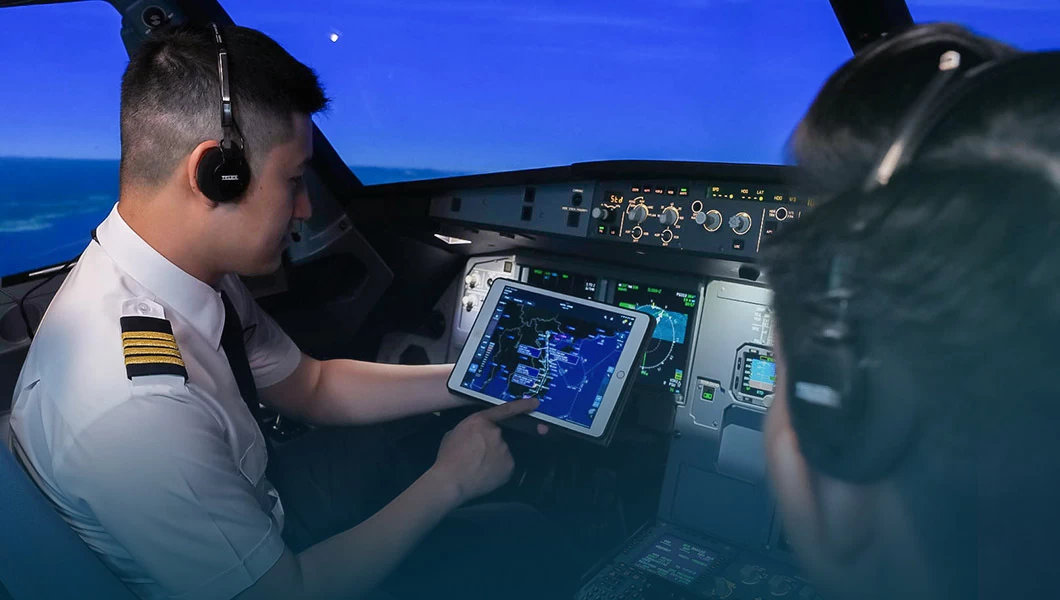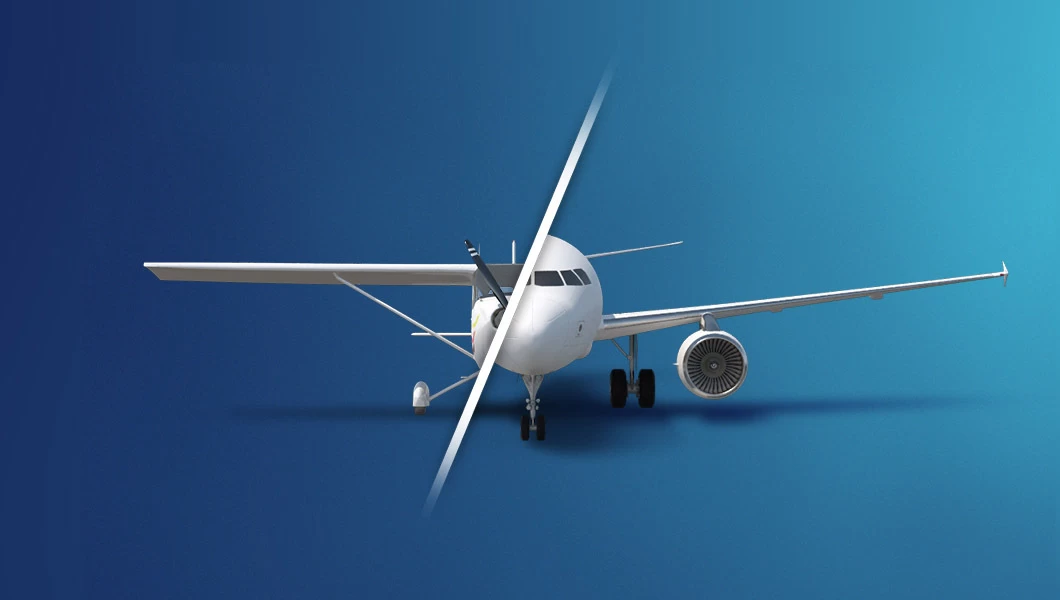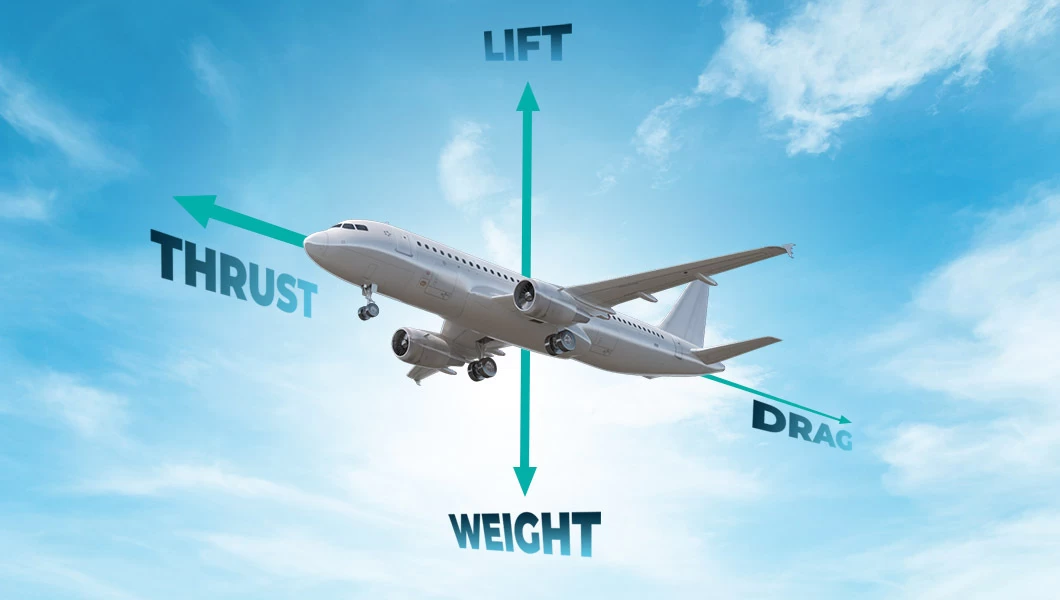Prefer to listen? Press play to hear this article.
How is all of this managed? It comes down to two core evaluations: the License Proficiency Check (LPC) and the Operator Proficiency Check (OPC). These assessments are fundamental to ensuring pilots maintain their skills, meet industry standards, and are prepared for a range of scenarios. Read on for a crystal-clear breakdown of what each entails!
What Is a Proficiency Check?
According to the European Union Aviation Safety Agency (EASA) in Part-FCL rules, a proficiency check is “the demonstration of skill to revalidate or renew ratings or privileges and consist in an exam conducted in a certified simulator that fully replicates the aircraft, both in its performance and in the construction of the cockpit. In other words, it’s a formal assessment where a pilot demonstrates their ability to meet regulatory standards, covering everything from flight skills to technical knowledge and situational responses.
What Is a License Proficiency Check?
The License Proficiency Check (LPC) is an annual skills assessment required to revalidate or renew a pilot’s license and ratings. Open to both commercial and private pilots, the LPC is an exam that takes place in a full flight simulator. During the assessment, pilots demonstrate their proficiency in various flight scenarios, adherence to standard operating procedures (SOPs), and effective Crew Resource Management (CRM).
During the LPC, they put you in normal, abnormal, and emergency scenarios—situations that would be unsafe to simulate in real flight. For example, an LPC might involve an engine failure scenario, requiring the pilot to demonstrate precise handling under stress. This way, pilots have to prove their proficiency through rare but critical procedures, which cannot be safely performed on regular flights.

Points to Remember About LPC:
- Separate LPC for Each Aircraft Type: If a pilot is certified to operate multiple aircraft types (e.g., Airbus A320 and A350), they must complete a distinct LPC for each type.
- Typical Duration: The LPC typically lasts about two hours, with the pilot being assessed solely in the Pilot Flying role. There is no division of time between flying and monitoring, as the monitoring role is evaluated in the four-hour skill tests. This duration applies to a standard LPC for one aircraft type and a single rating renewal. Any additional ratings or qualifications being tested will likely extend the overall duration.
- Training Locations: Usually, it is an approved training organization with a full flight simulator(s). BAA Training, for example, offers LPC exams and preparation courses at its Vilnius and Barcelona centers using full-flight simulators, such as the A320, B737 NG, and B737 MAX.
- Timing: To avoid expiration, pilots should aim to complete their LPC at least three months before the current validation ends, minimizing any risk of operational disruptions.

What Is an Operator Proficiency Check?
The Operator Proficiency Check (OPC) focuses on the operational standards, procedures, and protocols unique to a specific airline. Unlike the LPC, which is open to both private and commercial pilots, the OPC is exclusive to commercial pilots and is typically initiated by the airline employing the pilot.
The OPC is conducted twice a year and, like the LPC, assesses normal, abnormal, and emergency procedures, alongside CRM skills. However, it also includes training specific to the airline’s requirements, such as:
- Low Visibility Operations (LVO)
- Terrain Awareness and Warning Systems (TAWS)
- Special Airport Qualifications
- Advanced Upset Prevention and Recovery Training (UPRT)
This additional training ensures that pilots are not only technically proficient but also familiar with the specific demands of their airline’s routes and operational environments.
Key Differences in Duration: The OPC typically spans two days, with four hours of flight time each day, plus an additional two and a half hours for briefing and debriefing to review performance and correct minor deviations. During these sessions, pilots alternate between the roles of Pilot Flying and Pilot Monitoring. In contrast, the LPC requires only the Pilot Flying role. This dual-role approach in the OPC not only enhances a pilot’s proficiency in aircraft operation but also reinforces their understanding of crew coordination and decision-making processes. It’s also important to emphasize that the Pilot Monitoring role is critical, as they act as the safety pilot, ensuring that the Pilot Flying does not make inadvertent deviations and maintaining safety throughout the flight.
What Happens After Completing the LPC?
After a pilot successfully completes the LPC, the examiner submits the results to the CAA or relevant governing body, which updates the pilot’s license. The pilot then receives confirmation, allowing them to continue flying under the newly validated ratings. This update extends the license validity, allowing the pilot to continue flying under the newly validated ratings.
Your PILOT CAREER
starts with a first click
What can be extended during the LPC:
- An Instrument Rating might be extended for another year if the LPC includes IFR (Instrument Flight Rules) proficiency.
- Type Ratings are also renewed based on a successful LPC, keeping the pilot current for each specific aircraft type they are certified to operate.
- SEP or/and MEP Qualifications: these can also be renewed or extended as a result of a successful LPC
- Performance Based Navigation (PBN) Qualification can be extended during the LPC if the assessment includes relevant PBN procedures
- and more.
Preparing for a Pilot Proficiency Check
Preparation is key to performing well during a proficiency check, especially as checks can be high-stakes and exhaustive. Here are a few tips:
- Study the Aircraft: Familiarize yourself thoroughly with your aircraft’s systems. Reviewing cockpit layouts, especially switches or buttons used less frequently, can boost your confidence.
- Access Study Materials: You will study official material from the aircraft manufacturer and some explanatory facilitation guides generated by the ATO.
- Practice with a Partner: Training organizations typically pair you with a partner, so it’s beneficial to go over SOPs, checklists, and flows together. This reinforces skills and ensures seamless teamwork.
- Consider a Simulator Session: Practicing in a simulator before the actual exam can be a very valuable investment. It will provide you with the practical experience you need and help you feel more confident and prepared. For example, taking a type rating refresher training can be an excellent way to reach the level necessary for your license proficiency check. It’s an opportunity worth considering!
Create a Calendar to Keep Track
Creating a personal calendar to keep track of upcoming checks, like your License Proficiency Check (LPC), Operator Proficiency Check (OPC), and other certifications, can be incredibly helpful. Having a clear view of when each requirement is due means you’ll avoid last-minute stress. A calendar can serve as a friendly reminder, keeping you on top of deadlines without the rush and helping you stay compliant effortlessly.
Bottom Line
Staying current with your LPC and OPC requirements ensures that you’re always prepared and compliant with industry standards, reinforcing both safety and confidence in the cockpit, while also keeping you ready for job interviews. With the right preparation and organization, these checks become less daunting and more of an opportunity to sharpen and affirm your skills.


